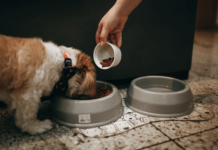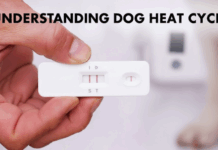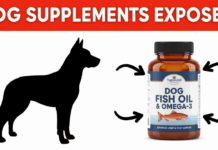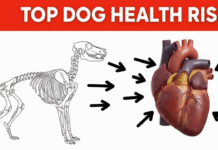Last Updated on October 21, 2023 by Dogs Vets
Transporting Your Pet in the UK: A Comprehensive Guide for Relocating
Moving to a new home in the UK can be an exciting adventure but also stressful for pet owners and their beloved furry companions.
Properly transporting pets requires thoughtful preparation and precautions to keep your animals safe and comfortable along the journey. This comprehensive guide provides tips for smooth pet transportation when relocating within the UK.
Select the Best Method for Your Pet
The right choice for pet transport depends on your animal’s size and disposition. For cats and small dogs, using pet carriers often works well.
Hard-sided kennels made from plastic or metal provide protection and prevent escape. Ensure it is large enough for your pet to stand, turn around, and lie down freely. Place familiar soft bedding and toys inside for comfort.
Affix bowls for food and water to the inside of the carrier door. Clearly label the crate with your contact details in case you get separated. Sedation may be recommended for extremely anxious pets. If driving, secure the crate so it doesn’t slide. Stop every few hours for exercise and potty breaks.
Consider hiring a professional pet transportation to and from the UK for medium- or large-sized dogs or multiple pets. Reputable companies like PetsOnTheMove transport pets in climate-controlled vehicles or temperature-regulated cargo holds on ferries and Eurotunnel trains. Veterinarians examine animals before travel to certify they are fit. Mild sedation can ease anxiety as needed. This method reduces risks and stress for pets and owners.
Driving your dog in a vehicle also works if you invest in sturdy crates or barriers. Well-ventilated and crash-tested models are essential for safety. Use non-slip pads and secure the crate to seat belts or cargo hooks.
Never leave a dog alone in a hot car. Take regular breaks for exercise and bathroom visits. For long road trips, plan pet-friendly lodging for overnight stops.
Prepare Your Pet for a Smooth Transition
To minimize anxiety:
- Begin preparing your pet for the relocation well in advance.
- Schedule a vet visit to ensure all vaccinations and medical records are up-to-date.
- Discuss whether calming medication or supplements may be helpful for travel.
- Stop feeding right before departure if your pet is prone to motion sickness.
Gradually introduce a new crate at home with positive reinforcement so your pet feels comfortable inside. Take your dog on incremental car rides around the neighborhood to practice. Feed high-protein meals after travel to help them recover. Gathering favorite toys, treats, beds, and other supplies ahead of time provides familiarity.
When packing, include at least a week’s worth of regular food to prevent digestive issues caused by sudden changes. Bring more than enough water to prevent dehydration. Purchase cleaning supplies in case of accidents. Assembling a first aid kit tailored to your pet’s needs is also sensible preparation.
Understand Pet Import and Export Regulations
Relocating overseas with your pet involves understanding the UK’s animal travel regulations. Pets entering the UK must have microchip identification and a current rabies vaccine given at least 21 days prior to arrival. Certain destinations may require a rabies antibody blood titer test to confirm efficacy as well.
Completing your pet’s Veterinary Pet Passport provides official certification they meet all import requirements for entry into the UK. Your vet must document the rabies vaccination and verification data in the passport. Keep this paperwork with you when crossing borders.
Exporting pets comes with its own set of health and documentation rules. For example, the UK requires an Animal Health Certificate for pets traveling to the EU, issued within 10 days before departure.
Be aware of breed-specific restrictions that certain countries impose. Thoroughly research the destination country’s quarantine policies, which can require private kenneling upon arrival for up to 4 months in some cases.
Manage Pet Stress During Relocation
Moving is inherently disruptive to pets accustomed to stable routines and environments. To ease their transition, maintain regular schedules for feeding times, exercise, play, and sleep as much as possible. Bring along their bed, dishes, toys, treats, and other familiar items that provide comfort.
Use synthetic pheromone sprays and diffusers as needed to relieve anxiety. Play calming music. Upon arriving in your new home, set up one room with all your pet’s belongings to provide a sense of familiarity. Take pets for walks around the new neighborhood to get them acclimated to sights and smells.
Give your furry friends extra love and reassurance. Be patient and understanding as your pet adjusts to new sounds and environments. Seek advice from your vet if anxiety or behavior problems persist beyond the first few weeks after relocating. With time, patience, and care, your companion can settle contentedly into their new UK home.
How to Pick the Best Pet Carriers
Travel crates are essential for protecting your pet during transportation and preventing escapes. Hard plastic or metal kennels with durable doors tend to be the sturdiest options for car and air travel. Proper ventilation is critical, so look for adequate holes, mesh panels, or airflow vents.
Some models feature tops or sides that open fully for easy pet access. Carrying handles and wheels allow maneuvering through airports. Bowls that attach to the door provide water access without spilling. Soft-sided carriers work for small pets but do not provide as much protection and security.
Choose a carrier that fits under standard seat dimensions for in-cabin airline travel. For cargo hold transport, adhere to your airline’s published size guidelines, but go bigger if possible. Avoid confining pets in tiny crates – pick a size, allowing them to move around a bit. Affix food and water containers securely inside to limit spills.
Line crates with absorbent puppy pads, crate liners, and bedding for messes. For car travel, wire crates provide airflow, but plastic kennels or reinforced barriers and seats work, too. Look for products crash-test-rated for safety with carrier latch hooks to prevent sliding. Always secure crates and restrain pets when driving.
Tips for Seamless Pet Relocation
Moving with pets takes planning, but these tips help ensure smooth transportation:
- Schedule vet appointments and obtain medical records, medications, etc.
- Research pet policies of airlines, hotels, rental cars, etc.
- Enlist someone to help transport carriers while you handle luggage
- Pack a pet travel bag with food, meds, bowls, bedding, waste bags, etc.
- Confirm pet-friendly lodging at every stop or layover
- Request direct flights to avoid losing your pet during connections
- Affix visible contact info to carriers and collar tags
- Carry photos of pets and microchip information
- Use a cheerful, calm voice to reassure pets while traveling
- Bring pheromone sprays, natural sedatives, etc., to reduce stress
- Make regular stops for exercise and bathroom breaks
By taking the right precautions, relocating your furry companions within the UK can go smoothly. Do your homework to find the optimal transportation method for your pet’s safety and comfort. Manage anxiety issues with preparation and routine. With care and planning, your pet will settle happily into their new UK home.
Fact Check
We strive to provide the latest valuable information for pet lovers with accuracy and fairness. If you would like to add to this post or advertise with us, don’t hesitate reach us. If you see something that doesn’t look right, contact us!

















